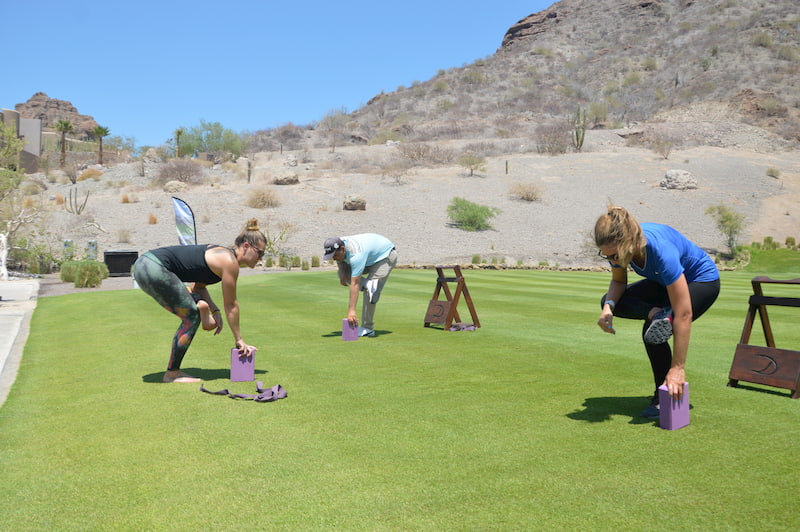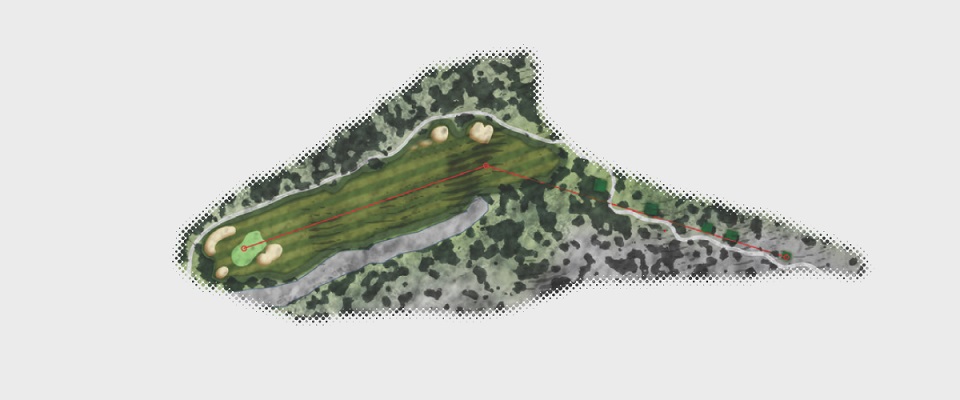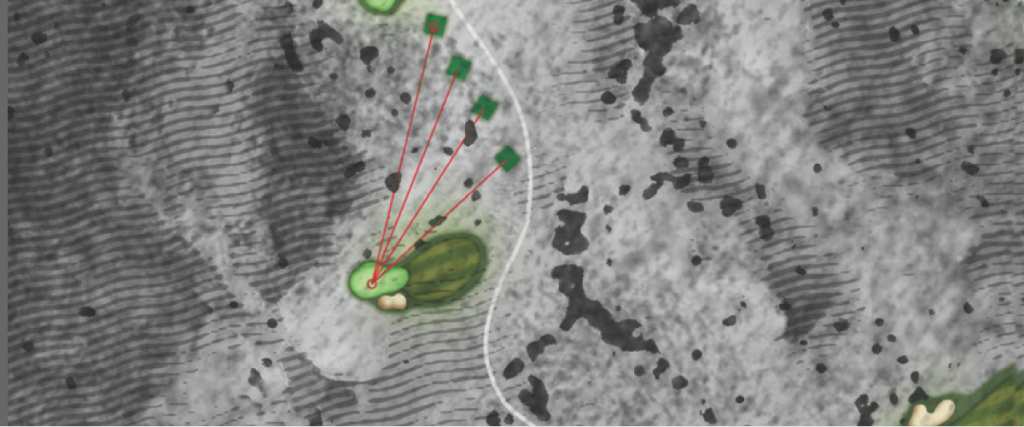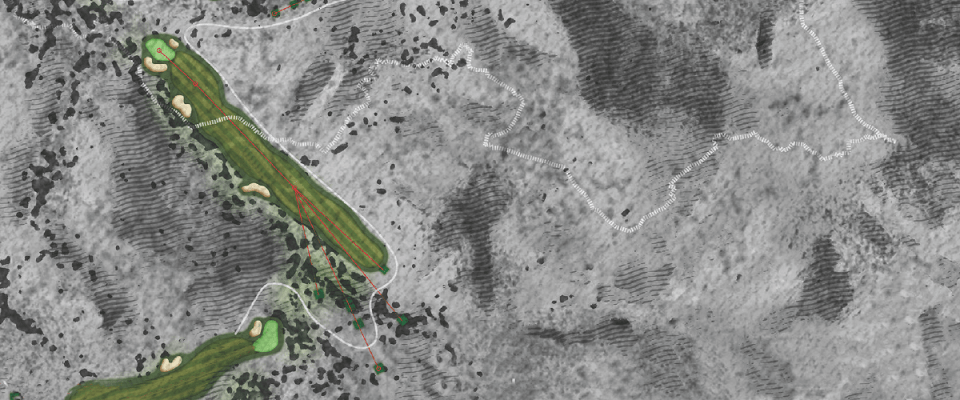


Golf Fitness Routines to Increase Flexibility—and Prevent Injury
Want to ensure that golf truly is the game of lifetime? A fitness routine that stretches and strengthens golf-specific muscles is highly recommended if you want to play golf for the duration of your life—and minimize the chance of injury.
Golf is a sport that demands both skill and athleticism. While technique and precision play a significant role in success on the course, physical fitness is equally vital for optimizing performance and preventing injury. Incorporating targeted exercises and training routines into your fitness regimen will not only help you improve your golf game–you’ll enjoy a healthier lifestyle, too.
The importance of golf-specific fitness cannot be underestimated. A strong, flexible body allows golfers to generate more power and maintain proper form throughout their swing, resulting in greater distance and accuracy. In addition, improved fitness can help prevent common golf-related injuries, such as back pain, tendonitis and shoulder strain.
NOTE: Be sure to consult with a fitness professional or a fitness-oriented golf instructor to develop a personalized training program tailored to your specific needs and goals.
Here are four recommended training routines designed to improve your on-course performance.
1. Core Strength and Stability
A strong core is the foundation of a powerful golf swing. Core exercises that target the abdominal muscles, obliques and lower back can help improve stability, balance and rotation, leading to more consistent and controlled swings. Planks, Russian twists, and medicine ball chops are excellent exercises for building core strength and stability.
2. Flexibility and Mobility
Flexibility and mobility are essential for achieving a full range of motion in the golf swing–and reducing the risk of injury. Incorporate dynamic stretches and mobility exercises into your warm-up routine to loosen up tight muscles and improve joint mobility. Focus on areas commonly affected by golf swings, such as the hips, shoulders and thoracic spine. Examples of effective stretches include hip rotations, shoulder circles and thoracic spine twists.


3. Strength Training
Strength training exercises can help players develop the muscular endurance and power needed to generate speed and distance in their swing. Incorporate exercises that target the major muscle groups involved in the golf swing, including the legs, glutes, back and arms. Squats, lunges, deadlifts, rows and shoulder presses are all effective strength training exercises for golfers. Start with light weights. Gradually increase the resistance as you build strength and proficiency.
4. Balance and Coordination
Balance and coordination are essential for maintaining stability throughout the golf swing and executing precise shots. Incorporate balance training exercises, such as single-leg squats, stability ball exercises and balance board drills, into your workout routine to improve proprioception (body awareness) and body control. These exercises will help you feel more grounded and stable during your swing, leading to improved consistency and accuracy.
By incorporating targeted exercises and training routines into your fitness regimen, you can enhance your on-course performance and reduce the risk of injury. Focus on building core strength and stability, improving flexibility and mobility, increasing muscular strength and power, and enhancing balance and coordination. With dedication and consistency, you can reach your potential–and enjoy a more fulfilling golf experience.


SIDEBAR – Yoga
Yoga, the ancient practice from India, is the perfect workout for modern golfers because of the benefits to your core, flexibility and balance. Asanas (yoga postures) can help relieve lower back pain, which is often due to musculature imbalance from playing a one-sided game; or due to tightness in the hips, hamstrings or hip flexors. Another added benefit: Yoga can improve your focus and concentration on the course.
Here are four exercises from the “Golf Yogi,” Mark Williamson, a former mini-tour player who lives and teaches in Scottsdale, Ariz. “If done on a regular basis at 75% effort,” he says, “these stretches will help keep the golf muscles long and fluid and should lead to an increase in range of motion.”
• Cow/Cat. Start off on all fours with your head raised, your wrists directly underneath your shoulders, and your knees directly underneath your hips. As you inhale with your arms straight, lower your belly and roll your shoulders back (this is “cow” position). As you exhale, press into your palms, tuck your chin to your chest, draw your naval up, and drop your tailbone (this is “cat” position). Repeat 10–15 times following the flow of your breath.
• Figure 8’s. From an all-fours position, bring your knees all the way together. Start to drop your hips to the right and let your head go to the left. Work the hips back over the heels and then off to the far left side and up again making a large circle. Pretend a flashlight is attached to your lower back and you’re drawing a circle on the ceiling with the beam. Repeat 10 times and then change direction.


• Low Lunge and Twist. Start in a low lunge position with your left knee on the mat and your right knee at 90 degrees directly over your ankle. Place your hands on the top of your knee and press forward, while dropping the tailbone down and leaning back with your torso a little. Hold for 30 – 60 seconds, then switch legs. For the twist, with your right foot out front grab the outside of your right knee with your left hand and extend your right arm over your back left foot while twisting through the core and keeping a firm front knee. Hold 30 – 45 seconds. You can twist deeper on each exhale while releasing a bit on each inhale. Switch sides.
• Half Splits. From the low lunge position with your right foot in front, sink into your back knee while straightening your front leg. Keep the toes of the front foot pointed toward the ceiling and press your front heel into the ground. Keep a flat back to get a good stretch by looking out in front of your right foot, chin up. Hold for 30–45 seconds and then switch sides.







































